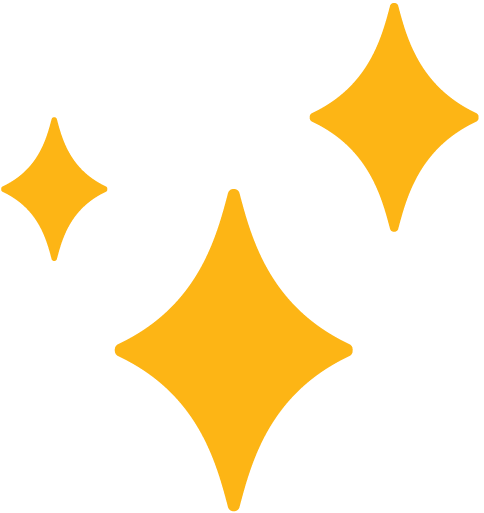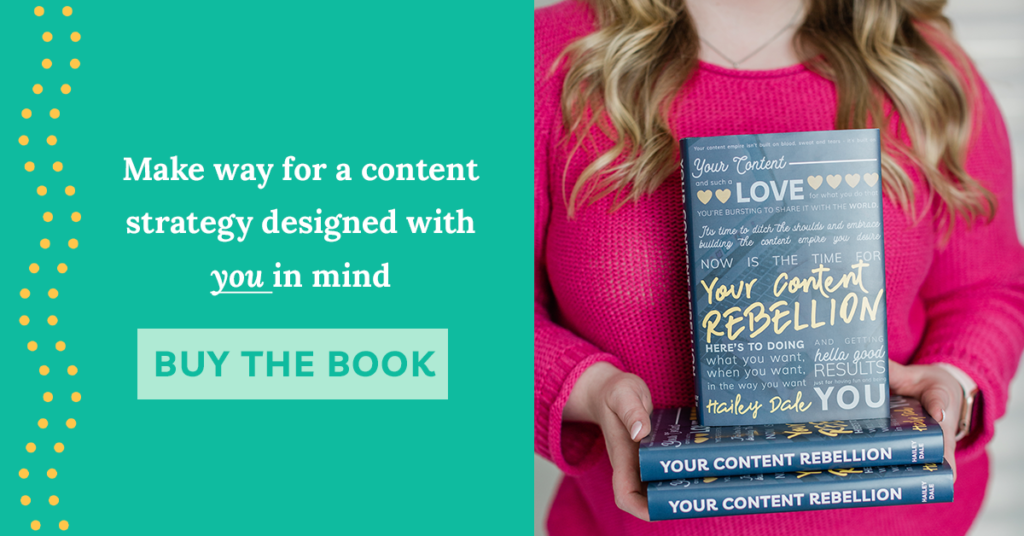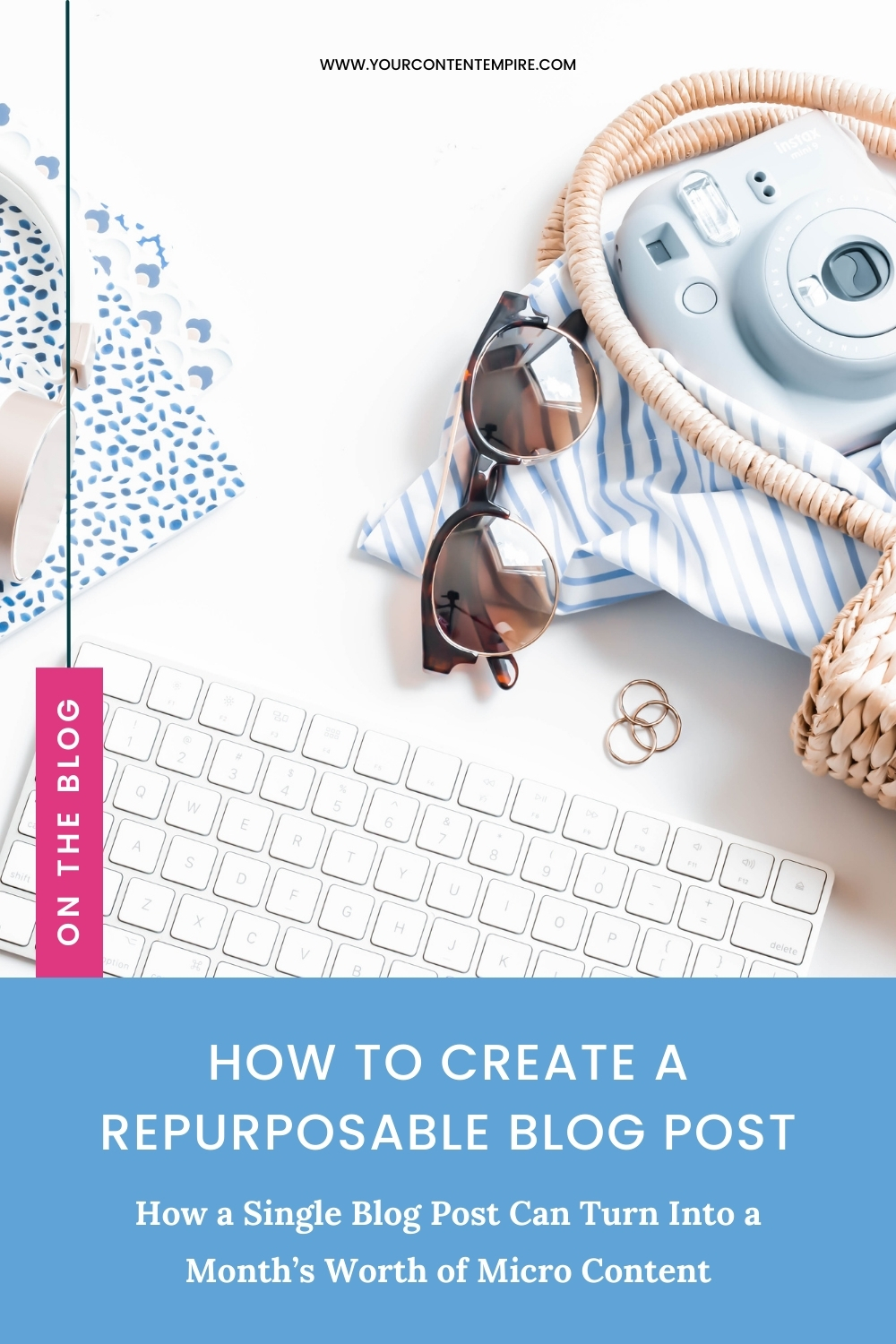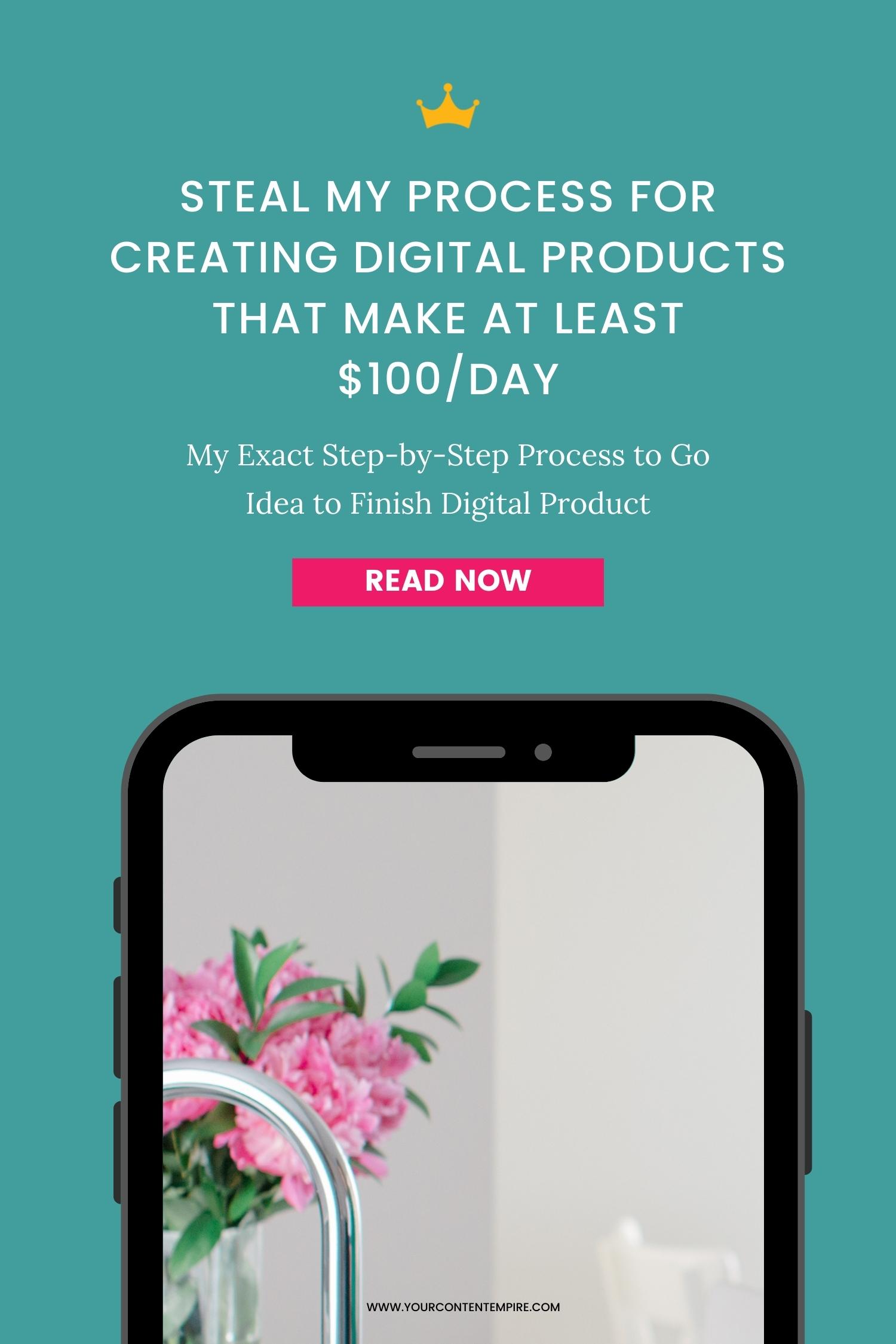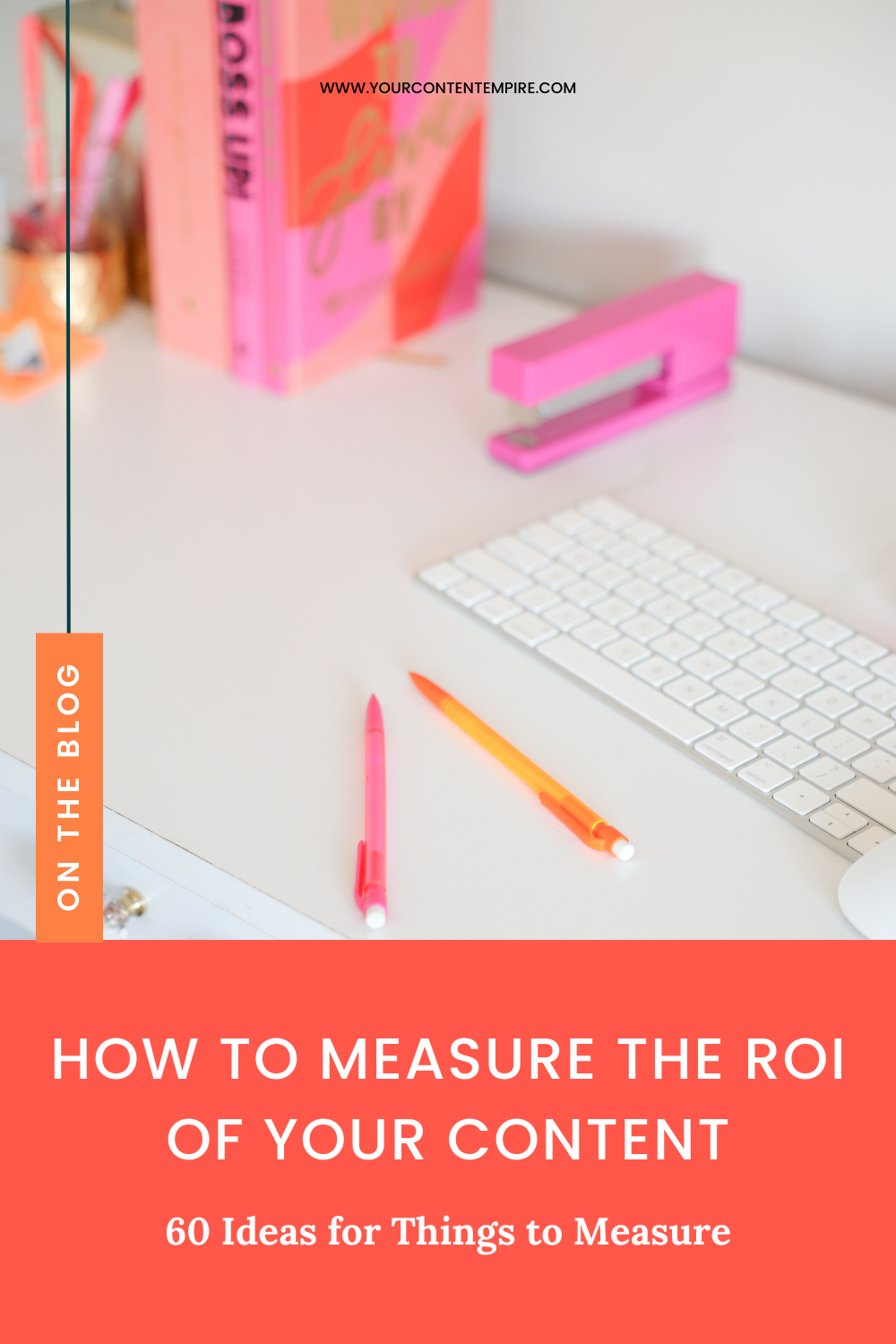Since I’m a content strategist, I feel like people expect me to have a lot more of their content answers than I actually do.
When the truth is that even if I designed the content strategy I thought was perfect for you – it wouldn’t necessarily be the one that works best for you. That’s why whenever I’m creating a content and traffic strategy at the end of our custom funnel packages, it’s done with you and there are a lot of questions I ask that dig into your style, preferences and bandwidth.
I’m not in the business of adding more SHOULDS to your plate (read about that here) and any time I do share, it’s more of a ‘this is something that’s worked for myself, a client or student and it might be worth exploring for you too.’
With that being said, I do get the allure of chasing a shiny new strategy that you see working for someone else. BEEN THERE!
But if you were to chase every strategy you come across? You’ll (a) have little time left for the strategy that’s right for you; and (b) go crazy trying to keep up.
So what’s the right way to try out new things with your marketing? How can you try on new strategies without getting whiplash from switching so often or getting a disappointment hangover when they don’t work as expected?
Introducing: Content Experiments
Experimentation is often overlooked, and often undervalued, as a method for finding your right content strategy (or really any business strategy, for that matter).
One big reason I endorse experimentation as a strategic approach is because it releases you from the pressure of failing. When you’re just experimenting and something doesn’t work out? It’s no biggie, it was the experiment that failed, not you.
When failure stops feeling so personal, you’ll be more willing to try new things (and potentially hit on something that works even better than expected)!
Another reason I think experimentation is the name of the game when it comes to strategy? It helps you COMMIT. That might seem counterintuitive since we go in knowing something might not work and will have to change, but it actually helps us see a strategy through.
When we’re personally invested in the outcome of a strategy, at the first sign of trouble or something not working, some of us can be a little too eager to jump the gun and quit. Even though it can often take 30-90 days for a strategy to start bearing fruit. We’re impatient to see results now.
But when you've designed a strategic experiment, you’ll have the terms (and time) predetermined so you’re more apt to stick with it and see things through long enough to know whether or not they're actually going to work.
Ready to Design a Strategic Experiment?
I'm going to walk you through how to design a strategic experimental approach for your business. Here are 7 steps for designing your own experiment:
Step 1 – Start With A Question, Interest Or Curiosity
Any great experiment starts with a great question.
Will X Work?
Maybe you saw a strategy that someone else was using and you're curious about how it might work in your own business.
Maybe you just saw something that's working in a completely different industry and thought, “Oh I'd love to maybe try that with my own business.”
Or maybe you have this long list of ideas of things that you want to implement or test out in the future.
These are all perfect places to start your strategic experiment.
The only rule is – you’ve got to come up with ONE question or idea to test out a time. You definitely don’t want to end up with multiple experiments running simultaneously. It’ll be impossible to know what’s impacting what if you have too many of them.
For me, this year, I was interested in what it would look like if I spent more time on Instagram. It hasn't been my favorite platform in the past because I’ve always thought it takes a lot of effort for somewhat limited returns in terms of traffic back to my website, which is something that I look at as a primary purpose of my content.
Yet, I had this curiosity and inkling that maybe – because my word of the year is connection – that this would be the right platform to go all in on for the first 90 days of the year.
And so my first strategic experiment of 2020 was born: “What would it look like in my business to focus on growing my Instagram as a way of connecting and building relationships?”
Step 2 – Let Yourself Learn, But Put A Cap On It
What I mean by this is that when you're trying something new, it might not be something that you know a whole lot about. So there is a certain amount of learning that is going to be required, whether that means taking a mini-course, reading a bunch of blog posts or watching some YouTube videos.
So in the second step of the business experimental design, you get to learn a little.
As a lifelong learner who has found herself in the trap of all-learning, no-doing before, I think that you need to put a time limit on it though. So you might give yourself two days or a week to learn, in order to gather the info you need to design your experiment.
With my Instagram experimental method, I wasn’t hella familiar with what was working today on the platform. Were hashtags still relevant? How could I fit stories into my day to day?
So I spent about a few days checking out resources from people who really know Instagram. But as soon as my time limit was up – I moved on to designing my experimental approach straight away.
Step 3 – Define Your Hypothesis
Like any great experiment, we are going to start with what we think might happen.
This can also be based on what we want to see happen, but we frame it as a hypothesis statement so that if it's something that doesn't work out, it was just experimental failure – not us.
When you're writing your own hypothesis statement, you want to think about what kind of results you think you’re going to see at the end of this 30 to 90-day experiment.
Here’s an example from my Instagram experiment: I think by focusing on Instagram for the next 90 days, I’ll cultivate new relationships, have more conversations in my DMs, and get invited to collaborate.
Step 4 – Design Your Experiment
When it comes to defining and designing your experiment, you want to think about what are the things that you are going to need to do in order to follow through on this experiment.
So this is where you're answering those what, when, how, why, and where questions like…
- What are you going to be doing?
- What are you going to be measuring?
- Where are you going to be doing it?
- Are you going to be using any tools to make this happen?
- Why are you doing it?
- How are you going to do it? What are the steps that you're going to take on a weekly, daily, monthly basis or some other frequency?
- When are you going to do it?
With my Instagram experiment, I was going to be using Planoly and Iconosquare as my go-to tools. On a daily basis: I’d respond to everyone who’d commented on my posts, respond to all DMs and then watching/comment on 5 stories and posts in my feed. It sounds simple but for phase 1 of my experimental design, that was exactly what I needed!
Step 5 – Follow-Through
Now that you know what you’re going to be doing – the only thing to do now is follow-through on them.
How will you do them?
- Maybe you have morning and afternoon actions?
- What are your weekly actions?
- What are the things you're going to be doing bi-weekly or monthly?
- Can you create yourself some kind of checklists so you're not guessing what you're doing every single time and you can just focus in on what needs to get done?
For my Instagram experiment, I set up hashtag lists, a bookmark folder of links so I could open them all in one-click and a checklist to follow.
So what are the things, the tools, the systems that you need in place to follow through on your experimental method?
Step 6 – Measure
A crucial step in any experiment is measurement. You want to measure at the end and at mid-points throughout to see whether your hypothesis is proving correct.
So what happened during the experiment?
What were your numbers (followers, traffic, engagement, etc.)?
What is a qualitative assessment on how the experiment went?
Any surprises?
Finally, was your hypothesis proven correct?
Step 7 – Decision
The final step after measuring is to decide whether this strategy is something you want to continue, stop, or outsource/automate.
If it got you results and you enjoyed it, keep it up!
If it got your results and you think there’s an opportunity to keep it going without your ongoing efforts, automate it!
If it didn’t work at all and you don’t want to figure it out, drop it!
Ready to Take a More Experimental Approach to Your Content?
That is why I wrote my book Your Content Rebellion – to help you rebel against the content creation treadmill and find a path to content creation you enjoy.

